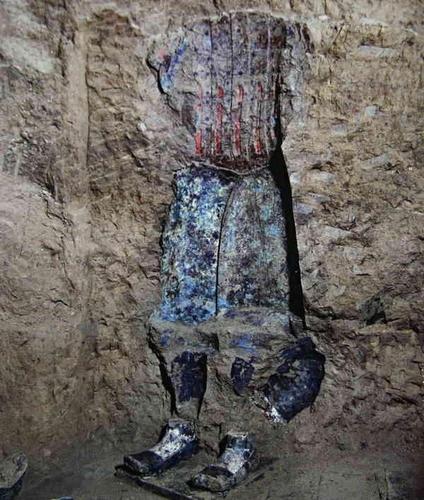
Were the Terracotta Army Buried Alive?
The Terracotta Army is one of the most iconic archaeological discoveries of all time. This vast collection of life-sized terracotta sculptures depicts the armies of Qin Shi Huang, the first emperor of China. Located near the city of Xi'an, the mausoleum complex of Qin Shi Huang is a testament to the emperor's ambition and power.
However, alongside the awe-inspiring craftsmanship, a chilling question often arises: were the Terracotta Army buried alive?
The Legend of a Live Burial
The idea of burying people alive with the deceased is not uncommon in ancient history. Many cultures believed in an afterlife that mirrored the earthly realm, requiring servants, soldiers, and possessions to accompany the departed.
There are gruesome historical accounts of concubines, servants, and even officials being sacrificed and interred alongside rulers. This practice was intended to serve the deceased in the afterlife and maintain their status even after death.
The Reality of the Terracotta Army
While the idea of a live burial is haunting, there is no historical evidence to suggest that the Terracotta Army warriors were once living people.
Here's why:
- Unique Individuality: Each terracotta warrior is incredibly detailed and shows unique facial features, expressions, hairstyles, and even armor details. This meticulous craftsmanship suggests they were modeled after real soldiers, but not created by encasing living people in clay.
- Sculptural Techniques: Archaeological analysis of the Terracotta Army reveals a sophisticated process of mold-making and firing. Different sections of the warriors were created separately and then assembled, a technique inconsistent with live burial.
- Lack of Human Remains: Excavations of the pits containing the Terracotta Army have revealed no evidence of human skeletal remains within the figures or in their immediate vicinity. This strongly contradicts the theory of live burial.
The Purpose of the Terracotta Army
The Terracotta Army was not meant to be a gruesome spectacle of death, but rather a grand symbolic gesture. Qin Shi Huang, obsessed with immortality, intended these clay soldiers to be his guardians in the afterlife, protecting him from unseen forces. They were symbols of his power, meant to inspire awe and fear even after his death.
FAQs
-
Q: Why did people believe the Terracotta Army was buried alive?
-
A: The belief likely stems from historical accounts of live burials in other ancient cultures and a lack of initial understanding about the Terracotta Army's creation.
-
Q: Were any humans buried alive in Qin Shi Huang's tomb complex?
-
A: Historical records suggest that many workers involved in the tomb's construction were killed and buried within the complex, but not as part of the Terracotta Army. Their deaths were likely to maintain secrecy about the tomb's treasures and layout.
-
Q: What is the significance of the Terracotta Army today?
-
A: The Terracotta Army stands as a testament to the artistic and logistical capabilities of ancient China. It offers a glimpse into the beliefs, military practices, and culture of the Qin dynasty, providing invaluable insights into a pivotal period in Chinese history.